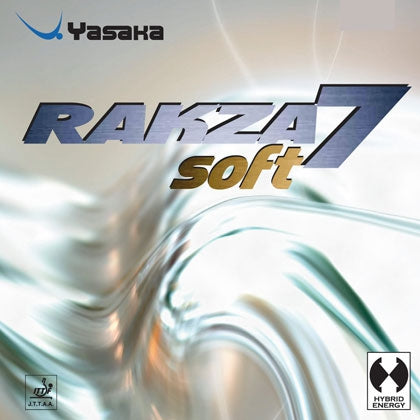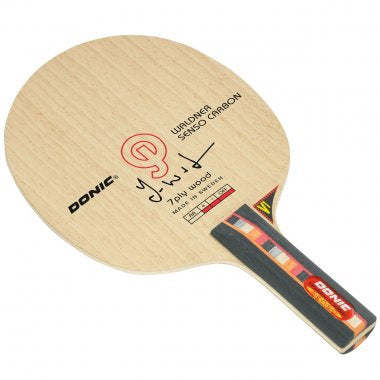Aucun produit ne correspond à ces filtres.
Utilisez moins de filtres ou
Comment choisir le bon revêtement de tennis de table en fonction de son style de jeu ?
Choisissez un revêtement selon votre profil : offensif, défensif ou polyvalent. Les revêtements rapides et dynamiques conviennent aux joueurs offensifs, tandis que les revêtements plus lents et contrôlés sont plus adaptés aux joueurs défensifs. Les joueurs polyvalents recherchent des revêtements équilibrés, alliant vitesse et contrôle.
En quoi les caoutchoucs collants et non collants sont-ils fabriqués différemment ?
Les revêtements collants sont collants au toucher et offrent une meilleure adhérence pour générer une quantité importante d'effets, notamment lors des services et des boucles. Les revêtements non collants sont plus lisses et favorisent davantage la vitesse de la mousse que celle du revêtement en termes de performance.
Quel caoutchouc est le meilleur pour l'effet et le contrôle ?
Les revêtements souples à moyennement durs, dotés d'une surface adhérente, offrent généralement un maximum d'effet et de contrôle. Privilégiez les revêtements inversés, qui offrent un temps de contact optimal et une mousse très élastique. On les appelle souvent revêtements à effet/contrôle, et ils incluent ceux qui offrent un équilibre entre vitesse et effet.
Quelle est la différence entre les caoutchoucs inversés, à picots et anti-rotation ?
Les revêtements inversés conservent une surface lisse et sont principalement conçus pour les effets et le jeu offensif. Les revêtements à picots, courts ou longs, réduisent la sensibilité aux effets et sont donc utilisés pour bloquer ou perturber le rythme. Les revêtements anti-effets réduisent les effets et sont utilisés en défense et en blocage.
À quelle fréquence dois-je remplacer mes caoutchoucs TT ?
Pour jouer régulièrement, il est conseillé de remplacer le revêtement tous les deux à quatre mois. Les joueurs de compétition devront le remplacer plus souvent, en fonction de l'usure et d'une baisse de performance. Lorsque le revêtement commence à perdre de l'adhérence ou à sembler mort, il est temps de le remplacer.
Quelle épaisseur d'éponge dois-je utiliser pour mon caoutchouc ?
Une épaisseur plus importante (2,0 mm et plus) signifie plus de vitesse et d'effets : jeu offensif. Une épaisseur plus faible (1,5 à 1,8 mm) est synonyme de contrôle, recherché par les débutants et les joueurs défensifs. La condition physique et le style de jeu doivent dicter le choix.
Ces revêtements sont-ils approuvés par l'ITTF pour les tournois ?
Seuls les revêtements portant le logo ITTF sont autorisés pour les tournois officiels. Il est conseillé de toujours vérifier la certification sur les informations produit ou sur l'emballage. Les revêtements non homologués peuvent être utilisés pour l'entraînement, mais pas en compétition.
Comment coller correctement le caoutchouc sur ma lame ?
À l'aide de colle à base d'eau pour tennis de table, appliquez une fine couche sur le bois et sur l'éponge. Une fois la colle sèche, placez le revêtement sur le bois à l'aide d'un rouleau ou d'une presse plate si possible. Une fois le revêtement ajusté, découpez soigneusement les bords avec des ciseaux ou une frange.
Pourrions-nous utiliser un type de caoutchouc différent à gauche et à droite ?
C'est tout à fait normal ; chacun peut choisir différents revêtements selon ses préférences. Ainsi, les joueurs ont tendance à choisir un revêtement très rapide et dynamique pour le coup droit, et un revêtement contrôlé pour le revers. Assurez-vous simplement que les deux revêtements sont homologués pour les matchs ITTF.
Quel caoutchouc un débutant devrait-il choisir ?
En général, un débutant devrait choisir un revêtement de vitesse moyenne, offrant un contrôle raisonnable et un effet moyen. Les mousses tendres ou moyennes seront plus faciles à maîtriser et adaptées au développement technique. Les fabricants classent généralement les modèles adaptés aux débutants comme « polyvalents » ou « contrôlés ».
Les joueurs professionnels utilisent-ils des revêtements pré-assemblés ou personnalisés ?
Les joueurs professionnels utilisent généralement des revêtements sur mesure adaptés à leur style de jeu. Il existe des combinaisons de plusieurs lames et revêtements pour le coup droit et le revers. Les raquettes pré-assemblées sont généralement destinées aux débutants et aux enfants.
Quelle est la durée de vie des caoutchoucs haute performance ?
Les revêtements haute performance durent de 1 à 3 mois en usage professionnel, grâce à une utilisation intensive et spectaculaire. Les joueurs amateurs peuvent les conserver de 3 à 6 mois environ, selon l'entretien et la fréquence d'utilisation. Lorsque le revêtement ne procure plus d'adhérence ni d'effet, il est temps d'en changer.
Comment nettoyer et entretenir les revêtements de tennis de table ?
Pour le garder propre, utilisez régulièrement un chiffon humide ou des nettoyants spéciaux pour caoutchouc afin que la poussière et la sueur ne pénètrent pas ; lorsque vous ne les utilisez pas, gardez le caoutchouc couvert ou dans un étui de protection afin qu'il ne sèche pas ; ne touchez pas la surface du caoutchouc avec votre main, car cela pourrait gâcher l'adhérence.
Existe-t-il des revêtements spécialement conçus pour les joueurs défensifs ?
Oui, il existe des revêtements conçus pour les styles défensifs axés sur le coup, le blocage et le contrôle. Il s'agit généralement de revêtements à picots longs, anti-spin ou souples inversés. Les joueurs défensifs utilisent des techniques de manipulation de spin à faible vitesse et inhabituelles.
Ces caoutchoucs sont-ils livrés avec des options réglées ou améliorées en usine ?
De nombreux revêtements haut de gamme bénéficient d'un réglage d'usine ou d'un pré-boostage pour maximiser la vitesse et l'effet. Ces revêtements sont relativement rapides et dynamiques dès leur sortie de l'emballage. Cependant, un boostage supplémentaire est contraire à la réglementation ITTF pour les réglages de compétition.




